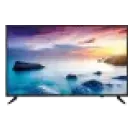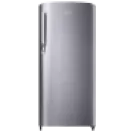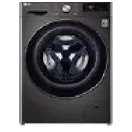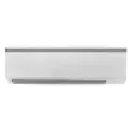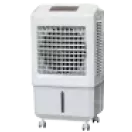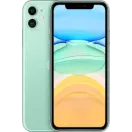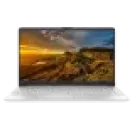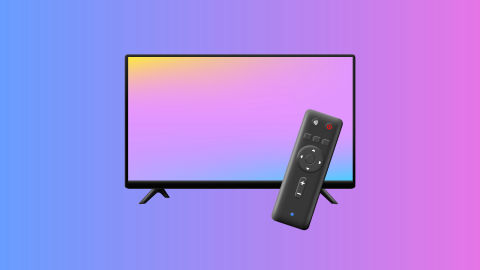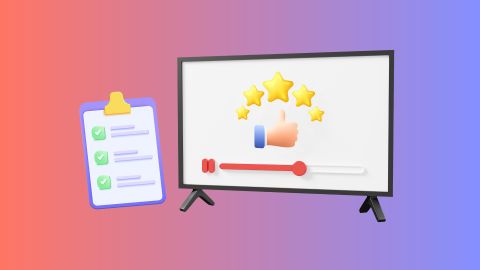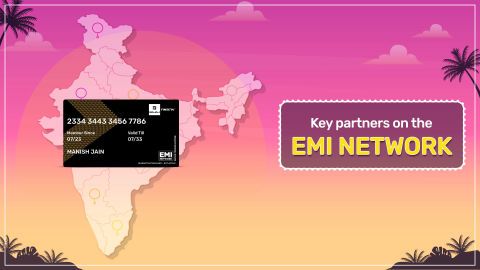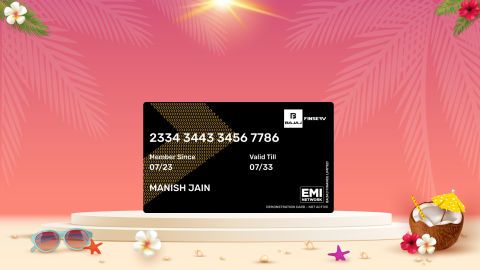Check out Bajaj Mall or step into our partner stores to discover an impressive range of solar inverters. Choose a reliable model tailored to your needs and benefit from a zero down payment offers for a smarter investment. Once you have made your decision, visit any of Bajaj Finserv's 1.5 lakh partner stores across 4,000 cities in India to complete your purchase. With Bajaj Finserv's financing options, you can buy your inverters on easy EMIs, making the purchase more affordable and convenient. Enjoy a seamless shopping experience and bring home a high-quality inverter without worrying about the upfront cost.
3 min
3-Jan-2025
Solar inverters offer an eco-friendly and cost-effective solution for powering homes and businesses. By converting solar energy into usable electricity, these inverters reduce dependency on traditional power sources and significantly lower electricity bills.
Check out Bajaj Mall or step into our partner stores to discover an impressive range of solar inverters. Choose a reliable model tailored to your needs and benefit from a zero down payment offers for a smarter investment. Once you have made your decision, visit any of Bajaj Finserv's 1.5 lakh partner stores across 4,000 cities in India to complete your purchase. With Bajaj Finserv's financing options, you can buy your inverters on easy EMIs, making the purchase more affordable and convenient. Enjoy a seamless shopping experience and bring home a high-quality inverter without worrying about the upfront cost.
Check out Bajaj Mall or step into our partner stores to discover an impressive range of solar inverters. Choose a reliable model tailored to your needs and benefit from a zero down payment offers for a smarter investment. Once you have made your decision, visit any of Bajaj Finserv's 1.5 lakh partner stores across 4,000 cities in India to complete your purchase. With Bajaj Finserv's financing options, you can buy your inverters on easy EMIs, making the purchase more affordable and convenient. Enjoy a seamless shopping experience and bring home a high-quality inverter without worrying about the upfront cost.
Introduction: Understanding solar inverters
Solar inverters are essential devices in solar power systems, converting direct current (DC) from solar panels into alternating current (AC) for household and commercial use. They play a crucial role in optimising energy output, ensuring safety, and monitoring power performance. Modern solar inverters are equipped with advanced features such as remote monitoring, efficiency tracking, and integrated battery storage systems. Whether for homes or businesses, they offer a sustainable and cost-effective energy solution. Explore eco friendly power alternatives while keeping your space warm with the latest room heaters.
For businesses, solar inverters provide reliable backup power, ensuring uninterrupted operations during grid failures. Advanced hybrid models offer the flexibility of drawing power from solar panels, batteries, or the grid, depending on energy availability and demand.
Modern inverters also come with smart monitoring systems, allowing users to track energy production, consumption, and storage through mobile apps or online dashboards. This feature ensures better energy management and helps identify any performance issues early.
Environmentally, solar inverters contribute to reducing carbon footprints by utilising clean, renewable energy. With fewer emissions and reduced reliance on fossil fuels, they support global sustainability goals.
When paired with appliances like Lifelong room heaters, solar inverters ensure energy-efficient heating solutions, even during peak energy demand periods.
Investing in a solar inverter not only delivers financial savings but also aligns with the long-term goal of creating a cleaner and greener future.
You can simply visit one of our partner stores, select the inverter of your choice and convert the cost into Easy EMIs. You can choose to repay it in a convenient tenure of up to 60 months. This financing solution from Bajaj Finserv is available on 1 million products.
Types of solar inverters: grid tied, off grid, and hybrid
Grid tied solar inverters:- Connected to the main power grid.
- Excess energy is sent back to the grid, reducing electricity bills.
- Ideal for areas with reliable grid access.
- Operate independently from the grid.
- Require battery storage to store excess energy.
- Best suited for remote locations with limited grid access.
- Combine features of grid tied and off-grid inverters.
- Can store energy in batteries and also send excess power to the grid.
- Suitable for both urban and rural settings.
How does a solar inverter work?
- Energy conversion: Solar panels generate DC electricity from sunlight. The inverter converts this DC power into usable AC electricity for homes and businesses.
- Power management: The inverter regulates voltage and frequency to ensure a consistent power supply for connected appliances.
- Battery integration: In off-grid and hybrid systems, the inverter charges and discharges batteries to store or release energy when needed.
- Grid synchronisation: Grid-tied inverters synchronise with the main power grid to transfer excess energy seamlessly.
- Monitoring and control: Advanced inverters come with monitoring systems that track energy generation, usage, and performance metrics.
- Load prioritisation: Inverters prioritise energy from solar panels before drawing power from batteries or the grid.
Key components of a solar inverter
- Solar panels: Capture sunlight and convert it into DC electricity.
- Battery storage: Stores excess energy generated during the day for later use.
- Charge controller: Manages the flow of electricity between the solar panels, batteries, and inverter to prevent overcharging or over discharging.
- Power inverter unit: Converts DC power from the panels or batteries into AC power for appliances.
- Monitoring system: Tracks energy production, consumption, and overall system performance.
- Cooling fan: Prevents overheating by dissipating excess heat generated during energy conversion.
- Protective circuits: Safeguard against overvoltage, short circuits, and electrical surges.
- Switches and wiring: Facilitate safe energy transmission between system components.
Benefits of using a solar inverter for your home or business
Solar inverters have become a vital part of sustainable energy solutions, offering numerous benefits for homes and businesses. They allow you to harness renewable energy, significantly reducing your dependency on traditional electricity grids. One of the most significant advantages is the reduction in electricity bills, as solar inverters enable you to generate your own power and, in grid-tied systems, even send surplus energy back to the grid for credits.For businesses, solar inverters provide reliable backup power, ensuring uninterrupted operations during grid failures. Advanced hybrid models offer the flexibility of drawing power from solar panels, batteries, or the grid, depending on energy availability and demand.
Modern inverters also come with smart monitoring systems, allowing users to track energy production, consumption, and storage through mobile apps or online dashboards. This feature ensures better energy management and helps identify any performance issues early.
Environmentally, solar inverters contribute to reducing carbon footprints by utilising clean, renewable energy. With fewer emissions and reduced reliance on fossil fuels, they support global sustainability goals.
When paired with appliances like Lifelong room heaters, solar inverters ensure energy-efficient heating solutions, even during peak energy demand periods.
Investing in a solar inverter not only delivers financial savings but also aligns with the long-term goal of creating a cleaner and greener future.
You can simply visit one of our partner stores, select the inverter of your choice and convert the cost into Easy EMIs. You can choose to repay it in a convenient tenure of up to 60 months. This financing solution from Bajaj Finserv is available on 1 million products.
Explore solar inverters on EMI with Bajaj Finserv
Explore a variety of high-performance solar inverter models on Bajaj Mall. Once you have reviewed your options, visit your nearest Bajaj Finserv partner store to complete your purchase. Bajaj Finserv's financing plans make owning a solar inverter stress free, with affordable repayment options through Easy EMIs. You can also explore financing for other home appliances and electronics with Bajaj Finserv.Benefits of shopping with Bajaj Finserv
- Affordable pricing: Get cost-effective pricing on solar inverters, making renewable energy more accessible.
- Easy EMIs: Enjoy flexible repayment plans with Bajaj Finserv’s Easy EMI options tailored to your budget.
- Zero down payment: Selected solar inverters are available with zero down payment, reducing the initial financial burden.
- Wide range and accessibility: Browse through an extensive collection of solar inverters across Bajaj Finserv partner stores.
- Special deals and cashback: Benefit from exclusive deals and cashback offers on solar inverter purchases.
- Complimentary home delivery: Enjoy the convenience of free home delivery on selected solar inverters.
Inverters
Brands
- Luminous inverters
- Livguard inverters
- V-guard inverters
- Genus inverters
- Su-kam inverters
- Sine Wave inverters
- 1 KVA inverters
- 2 KVA inverters
- 5 KVA inverters
- 12V inverters
- 900 VA inverters
- 1500 watt inverters
- UPS inverters
- Solar Inverters
- Grid inverters
- Sine Wave inverters
- Square wave inverters
- Hybrid inverter
- UPS Vs inverters
- Exide Vs Luminous inverters
- Inverter buying guide
- Choose inverter for home
- Best solar inverters for home
Bajaj Finserv App for all your financial needs and goals
Trusted by 50 million+ customers in India, Bajaj Finserv App is a one-stop solution for all your financial needs and goals.
You can use the Bajaj Finserv App to:
Apply for loans online, such as Instant Personal Loan, Home Loan, Business Loan, Gold Loan, and more.
You can use the Bajaj Finserv App to:
Apply for loans online, such as Instant Personal Loan, Home Loan, Business Loan, Gold Loan, and more.
- Explore and apply for co-branded credit cards online.
- Invest in fixed deposits and mutual funds on the app.
- Choose from multiple insurance for your health, motor and even pocket insurance, from various insurance providers.
- Pay and manage your bills and recharges using the BBPS platform. Use Bajaj Pay and Bajaj Wallet for quick and simple money transfers and transactions.
- Apply for Insta EMI Card and get a pre-approved limit on the app. Explore over 1 million products on the app that can be purchased from a partner store on Easy EMIs.
- Shop from over 100+ brand partners that offer a diverse range of products and services.
- Use specialised tools like EMI calculators, SIP Calculators
- Check your credit score, download loan statements, and even get quick customer support—all on the app.
Frequently asked questions
How long do solar inverters typically last?
Solar inverters typically last between 10 and 15 years, depending on their quality, usage, and maintenance. High-end models may last longer, while frequent power surges or poor environmental conditions can reduce their lifespan. Regular servicing helps extend their operational life.
What is the difference between a string inverter and a microinverter?
String inverters connect multiple solar panels in series, converting DC to AC in one central unit. Microinverters, on the other hand, are installed on individual panels, converting power at the source. Microinverters are more efficient for shaded panels, while string inverters are cost effective for larger systems.
Can a solar inverter work without a battery?
Yes, grid-tied solar inverters can work without a battery. These systems feed excess energy back into the power grid. However, off-grid systems require batteries to store energy for later use. Hybrid inverters offer both grid connection and battery storage options.
How do I maintain my solar inverter for optimal performance?
To maintain your solar inverter, keep it in a well-ventilated area, away from moisture and direct sunlight. Regularly check for loose connections, dust accumulation, and software updates. Schedule professional servicing annually to ensure optimal performance and address any technical issues promptly.
How long do solar inverters typically last?
Solar inverters typically last between 10 and 15 years, depending on their quality, usage, and maintenance. High-end models may last longer, while frequent power surges or poor environmental conditions can reduce their lifespan. Regular servicing helps extend their operational life.
Show More
Show Less
